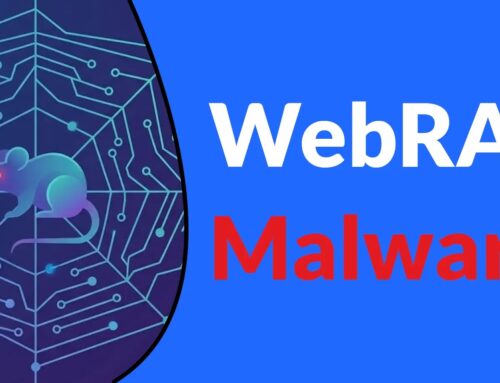
Open Source CyberSOCEval Sets New Standards for AI in Malware Analysis and Threat Intelligence
The relentless pace of cyber threats demands increasingly sophisticated defenses. For Security Operations Centers (SOCs), the promise of Artificial Intelligence (AI) and Large Language Models (LLMs) in particular, offers a beacon of hope for automating threat detection, analysis, and response. Yet, effectively evaluating these advanced AI systems in real-world cybersecurity scenarios has remained a significant hurdle. This is where CyberSOCEval enters the fray, a groundbreaking open-source benchmark suite poised to redefine how we measure the efficacy of AI in critical defensive domains.
Introducing CyberSOCEval: A New Benchmark for Cybersecurity AI
The release of CyberSOCEval, as part of the broader CyberSecEval 4 initiative, marks a pivotal moment in cybersecurity AI development. This suite is not just another set of tests; it’s the first comprehensive evaluation framework engineered specifically for LLMs operating within SOC environments. Its primary objective is to bridge the critical gap in existing AI evaluation methods, which often fall short in simulating the complex, high-stakes challenges faced by security analysts daily.
By providing a standardized, robust, and open-source platform, CyberSOCEval enables researchers, developers, and security teams to rigorously assess their AI models against realistic scenarios. This transparency and collaborative potential are crucial for accelerating innovation and ensuring that AI solutions are truly fit for purpose in defending against evolving cyber adversaries.
Focus Areas: Malware Analysis and Threat Intelligence Reasoning
CyberSOCEval strategically zeros in on two foundational defensive pillars where LLMs can offer immense value: Malware Analysis and Threat Intelligence Reasoning. These aren’t arbitrary choices; they represent areas bottlenecked by manual effort and requiring deep contextual understanding – precisely where advanced AI can excel.
Malware Analysis: Deeper Insights with AI
Traditional malware analysis is often a resource-intensive process, demanding expert knowledge to dissect malicious code, understand its behavior, and attribute its origins. CyberSOCEval’s benchmarks within this domain challenge LLMs to:
- Identify malware families based on code snippets or behavioral logs.
- Summarize complex malware reports, extracting key indicators of compromise (IOCs).
- Predict potential attack vectors or payloads given partial information.
- Analyze shellcode and scripting languages for malicious intent, often a blind spot for signature-based tools.
By simulating these tasks, CyberSOCEval helps to gauge an LLM’s ability to not only process vast amounts of technical data but also to reason over it to derive actionable insights, thereby augmenting human analysts’ capabilities.
Threat Intelligence Reasoning: Connecting the Dots
Threat intelligence is the lifeblood of proactive cybersecurity. It involves collecting, processing, and analyzing information about potential or actual threats. The reasoning component is paramount – connecting disparate pieces of information to form a coherent picture of attacker tactics, techniques, and procedures (TTPs).
Within CyberSOCEval, LLMs are tested on their capacity to:
- Correlate diverse threat intelligence feeds (e.g., open-source intelligence, dark web forums, technical reports).
- Identify relationships between different threat actors or campaigns.
- Predict future attack trends or vulnerabilities based on historical data.
- Generate concise, actionable threat advisories for stakeholders.
- Evaluate the severity and impact of emerging threats, such as those exploiting common vulnerabilities like CVE-2023-38831, which could be analyzed for its potential impact on specific software stacks.
Success in these areas signifies an LLM’s ability to move beyond simple information retrieval and into sophisticated analytical reasoning, a critical asset for modern SOCs.
The Open-Source Advantage and Future Implications
The open-source nature of CyberSOCEval is a game-changer. It fosters community collaboration, allowing researchers and practitioners worldwide to contribute to its development, expansion, and validation. This collective intelligence ensures the benchmark remains dynamic, relevant, and robust against the ever-shifting threat landscape.
For organizations deploying AI in their SOCs, CyberSOCEval offers a standardized metric to compare different LLM solutions, ensuring they invest in technologies that genuinely enhance their defensive posture. For developers, it provides clear targets and feedback loops for refining and improving their models.
Looking ahead, CyberSOCEval’s influence will likely extend beyond just evaluation. It will drive the development of more specialized and powerful cybersecurity LLMs, pushing the boundaries of what AI can achieve in threat detection, analysis, and response. The benchmark serves as a crucial catalyst for integrating AI more seamlessly and effectively into the core operations of cybersecurity defense.
Conclusion
CyberSOCEval represents a significant leap forward in validating the utility of AI in cybersecurity. By providing the first comprehensive, open-source framework for evaluating LLMs in malware analysis and threat intelligence reasoning, it empowers security professionals and developers to build and deploy more effective, intelligent defenses. This initiative will undoubtedly accelerate AI’s integration into SOC operations, making our digital world more secure.





